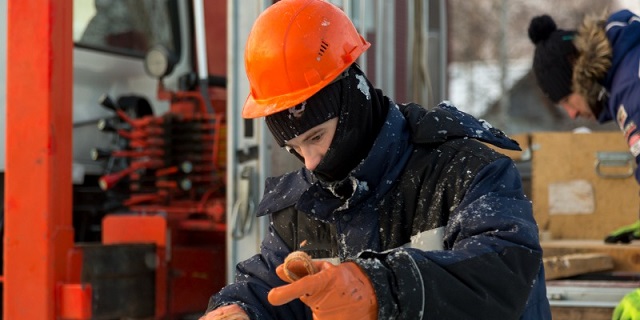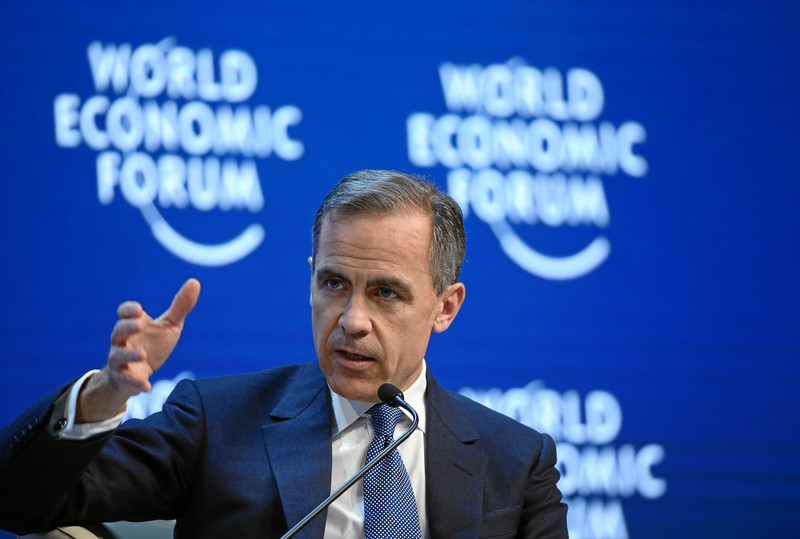Alberta
Here’s why the rest of Canada doesn’t want Alberta to leave the CPP

From the Fraser Institute
By Tegan Hill Associate Director, Alberta Policy, Fraser Institute
Provincial and territorial finance ministers recently met with federal Finance Minister Chrystia Freeland to discuss a hot topic—Alberta’s potential withdrawal from the Canada Pension Plan (CPP). According to Nova Scotia Finance Minister Allan MacMaster, “there was real consensus” from his peers that they want Alberta to stay in the CPP. This is unsurprising; while an Alberta pension plan would benefit Albertans, it would come at great cost to the rest of Canada.
Why might Albertans want to leave the CPP?
Albertans pay a basic CPP contribution rate of 9.9 per cent, typically deducted from their paycheques. According to a report commissioned by the Smith government, that rate would fall to 5.91 per cent for a new CPP-like provincial program for Albertans, which means each Albertan would save up to $2,850 in 2027 (the first year of the hypothetical Alberta plan) while maintaining the same retirement benefits. In sharp contrast, to keep the CPP afloat without Alberta, the basic contribution rate for the rest of Canada would increase to 10.36 per cent. In other words, smaller paycheques for the rest of Canada.
The report’s calculation is based on several assumptions, which some analysts have criticized, arguing that Alberta’s estimated share of CPP assets—$334 billion—is not fair or realistic. To be clear, this share (equal to 53 per cent of the CPP) is based on specific legislation that governs the withdrawal of any province from the CPP. But, even if the share of assets to Alberta were much lower, the province would benefit from reduced contribution rates with an Alberta pension plan.
For instance, if Alberta left the CPP and received merely 25 per cent of the CPP’s assets in 2025 ($150 billion), the contribution rate in Alberta would fall from 9.9 per cent to 7.8 per cent, which would mean $1,086 in savings annually per Albertan. Meanwhile, the contribution rate for the rest of Canada would have to increase. If you dropped Alberta’s share to 20 per cent ($120 billion in 2025), Alberta’s contribution rate would fall to 8.2 per cent, equivalent to approximately $836 in savings annually per Albertan.
Put differently, even if Alberta’s share of assets were less than half the report’s estimate, Albertans would benefit from lower contribution rates for the exact same benefits while the rest of Canada may pay higher contributions to maintain current benefits. Why does Alberta mean so much to the CPP? Because Alberta generally has higher employment rates and a comparatively younger population, which means more workers pay into the fund and less retirees take from it. Albertans also have higher average incomes, which means there’s a higher level of premiums paid into the fund. As such, Albertans have paid significantly more into the CPP than its retirees have received in return.
It’s not surprising that the rest of Canada doesn’t want Alberta to leave the CPP for an equivalent provincial plan because—even if Alberta’s share is less than $334 billion, Alberta’s withdrawal would come with big costs for other Canadians across the country.
Author:
Alberta
Big win for Alberta and Canada: Statement from Premier Smith

Premier Danielle Smith issued the following statement on the April 2, 2025 U.S. tariff announcement:
“Today was an important win for Canada and Alberta, as it appears the United States has decided to uphold the majority of the free trade agreement (CUSMA) between our two nations. It also appears this will continue to be the case until after the Canadian federal election has concluded and the newly elected Canadian government is able to renegotiate CUSMA with the U.S. administration.
“This is precisely what I have been advocating for from the U.S. administration for months.
“It means that the majority of goods sold into the United States from Canada will have no tariffs applied to them, including zero per cent tariffs on energy, minerals, agricultural products, uranium, seafood, potash and host of other Canadian goods.
“There is still work to be done, of course. Unfortunately, tariffs previously announced by the United States on Canadian automobiles, steel and aluminum have not been removed. The efforts of premiers and the federal government should therefore shift towards removing or significantly reducing these remaining tariffs as we go forward and ensuring affected workers across Canada are generously supported until the situation is resolved.
“I again call on all involved in our national advocacy efforts to focus on diplomacy and persuasion while avoiding unnecessary escalation. Clearly, this strategy has been the most effective to this point.
“As it appears the worst of this tariff dispute is behind us (though there is still work to be done), it is my sincere hope that we, as Canadians, can abandon the disastrous policies that have made Canada vulnerable to and overly dependent on the United States, fast-track national resource corridors, get out of the way of provincial resource development and turn our country into an independent economic juggernaut and energy superpower.”
Alberta
Energy sector will fuel Alberta economy and Canada’s exports for many years to come

From the Fraser Institute
By any measure, Alberta is an energy powerhouse—within Canada, but also on a global scale. In 2023, it produced 85 per cent of Canada’s oil and three-fifths of the country’s natural gas. Most of Canada’s oil reserves are in Alberta, along with a majority of natural gas reserves. Alberta is the beating heart of the Canadian energy economy. And energy, in turn, accounts for one-quarter of Canada’s international exports.
Consider some key facts about the province’s energy landscape, as noted in the Alberta Energy Regulator’s (AER) 2023 annual report. Oil and natural gas production continued to rise (on a volume basis) in 2023, on the heels of steady increases over the preceding half decade. However, the dollar value of Alberta’s oil and gas production fell in 2023, as the surging prices recorded in 2022 following Russia’s invasion of Ukraine retreated. Capital spending in the province’s energy sector reached $30 billion in 2023, making it the leading driver of private-sector investment. And completion of the Trans Mountain pipeline expansion project has opened new offshore export avenues for Canada’s oil industry and should boost Alberta’s energy production and exports going forward.
In a world striving to address climate change, Alberta’s hydrocarbon-heavy energy sector faces challenges. At some point, the world may start to consume less oil and, later, less natural gas (in absolute terms). But such “peak” consumption hasn’t arrived yet, nor does it appear imminent. While the demand for certain refined petroleum products is trending down in some advanced economies, particularly in Europe, we should take a broader global perspective when assessing energy demand and supply trends.
Looking at the worldwide picture, Goldman Sachs’ 2024 global energy forecast predicts that “oil usage will increase through 2034” thanks to strong demand in emerging markets and growing production of petrochemicals that depend on oil as the principal feedstock. Global demand for natural gas (including LNG) will also continue to increase, particularly since natural gas is the least carbon-intensive fossil fuel and more of it is being traded in the form of liquefied natural gas (LNG).
Against this backdrop, there are reasons to be optimistic about the prospects for Alberta’s energy sector, particularly if the federal government dials back some of the economically destructive energy and climate policies adopted by the last government. According to the AER’s “base case” forecast, overall energy output will expand over the next 10 years. Oilsands output is projected to grow modestly; natural gas production will also rise, in part due to greater demand for Alberta’s upstream gas from LNG operators in British Columbia.
The AER’s forecast also points to a positive trajectory for capital spending across the province’s energy sector. The agency sees annual investment rising from almost $30 billion to $40 billion by 2033. Most of this takes place in the oil and gas industry, but “emerging” energy resources and projects aimed at climate mitigation are expected to represent a bigger slice of energy-related capital spending going forward.
Like many other oil and gas producing jurisdictions, Alberta must navigate the bumpy journey to a lower-carbon future. But the world is set to remain dependent on fossil fuels for decades to come. This suggests the energy sector will continue to underpin not only the Alberta economy but also Canada’s export portfolio for the foreseeable future.
-

 2025 Federal Election1 day ago
2025 Federal Election1 day agoPoilievre To Create ‘Canada First’ National Energy Corridor
-

 International1 day ago
International1 day agoFREE MARINE LE PEN!’: Trump defends French populist against ‘lawfare’ charges
-

 Energy2 days ago
Energy2 days agoTrump Takes More Action To Get Government Out Of LNG’s Way
-

 Health2 days ago
Health2 days agoSelective reporting on measles outbreaks is a globalist smear campaign against Trump administration.
-

 2025 Federal Election2 days ago
2025 Federal Election2 days agoMainstream Media Election Coverage: If the Election Was a NHL Game, the Ice Would be Constantly Tilted Up and to the Left
-

 2025 Federal Election2 days ago
2025 Federal Election2 days agoMark Carney is trying to market globalism as a ‘Canadian value.’ Will it work?
-

 Automotive1 day ago
Automotive1 day agoDark Web Tesla Doxxers Used Widely-Popular Parking App Data To Find Targets, Analysis Shows
-

 COVID-1921 hours ago
COVID-1921 hours agoMaxime Bernier slams Freedom Convoy leaders’ guilty verdict, calls Canada’s justice system ‘corrupt’








